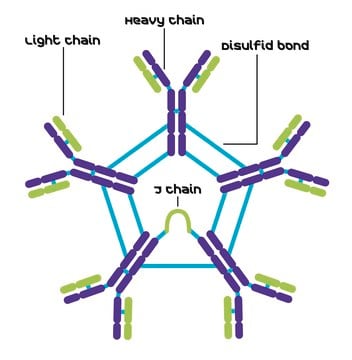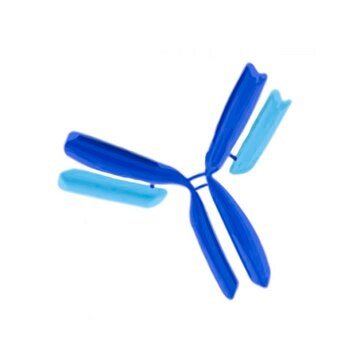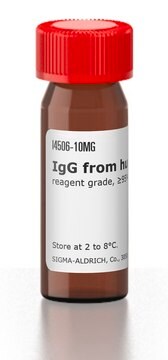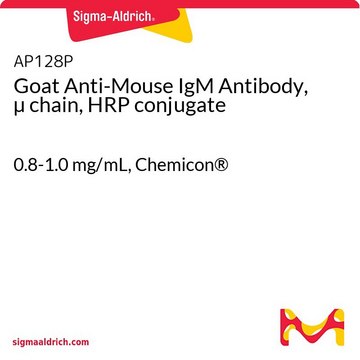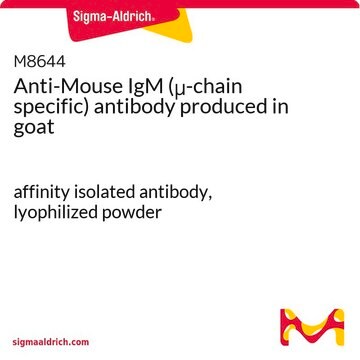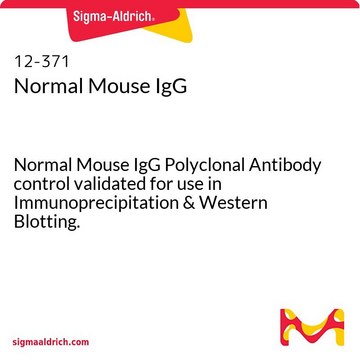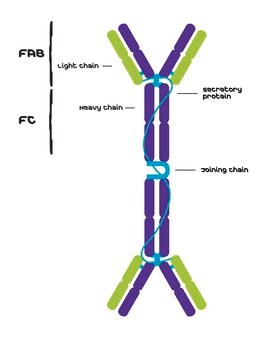PP50
IgM, Mouse
Mouse IgM Polyclonal Antibody control validated for use in ELISA.
Zaloguj sięWyświetlanie cen organizacyjnych i kontraktowych
About This Item
Kod UNSPSC:
12352203
eCl@ss:
32160702
NACRES:
NA.41
Polecane produkty
pochodzenie biologiczne
mouse
Poziom jakości
klon
polyclonal
producent / nazwa handlowa
Chemicon®
stężenie
2.0 mg/mL
metody
ELISA: suitable
Warunki transportu
wet ice
docelowa modyfikacja potranslacyjna
unmodified
Opis ogólny
Source: Normal mouse serum.
Zastosowanie
Research Category
Inflammation & Immunology
Inflammation & Immunology
Research Sub Category
Immunoglobulins & Immunology
Immunoglobulins & Immunology
Suitable for use as an antigen/ligand in immunochemical reactions, as a control in assays, in conjugation and other immunological methods requiring highly purified immunogloblins.
Jakość
Single precipititin arc was observed against anti-mouse whole sera and anti-mouse IgM (μ chain specific) when assayed by IEP. No reaction was observed against anti-mouse IgG (Fc). Some light chain cross-reactivity may occur with anti-mouse IgG (H&L).
Postać fizyczna
Format: Purified
Purified immunoglobulin. Liquid (sterile filtered), in 0.1M Tris Chloride, 0.5M NaCl pH 8.0 with 0.1% sodium azide.
Przechowywanie i stabilność
Maintain at +2-8°C before opening. The product is stable at +2-8°C as an undiluted liquid for up to 12 months after date of receipt before opening. For extended storage mix with an equal volume of glycerol (ACS grade or better), aliquot contents and freeze at -20°C or below for up to 6 months. Avoid repeated freeze/thaw cycles.
Informacje prawne
CHEMICON is a registered trademark of Merck KGaA, Darmstadt, Germany
Oświadczenie o zrzeczeniu się odpowiedzialności
Unless otherwise stated in our catalog or other company documentation accompanying the product(s), our products are intended for research use only and are not to be used for any other purpose, which includes but is not limited to, unauthorized commercial uses, in vitro diagnostic uses, ex vivo or in vivo therapeutic uses or any type of consumption or application to humans or animals.
Ta strona może zawierać tekst przetłumaczony maszynowo.
Kod klasy składowania
12 - Non Combustible Liquids
Klasa zagrożenia wodnego (WGK)
WGK 1
Temperatura zapłonu (°F)
Not applicable
Temperatura zapłonu (°C)
Not applicable
Certyfikaty analizy (CoA)
Poszukaj Certyfikaty analizy (CoA), wpisując numer partii/serii produktów. Numery serii i partii można znaleźć na etykiecie produktu po słowach „seria” lub „partia”.
Masz już ten produkt?
Dokumenty związane z niedawno zakupionymi produktami zostały zamieszczone w Bibliotece dokumentów.
Klienci oglądali również te produkty
Xianli Wang et al.
Bioscience reports, 31(2), 87-98 (2010-05-11)
HF (heart failure) after MI (myocardial infarction) is a major cause of morbidity and mortality worldwide. Recent studies have shown that hydrogen sulfide (H2S) has cardioprotective effects. Hence, we aimed to elucidate the potential effects of H2S on HF after
Analysis of the interactions of viral and cellular factors with human cytomegalovirus lytic origin of replication, oriLyt.
Kagele, D; Rossetto, CC; Tarrant, MT; Pari, GS
Virology null
Cardiac dysfunction induced by experimental myocardial infarction impairs the host defense response to bacterial infection in mice because of reduced phagocytosis of Kupffer cells.
Nogami Y, Kinoshita M, Takase B, Inatsu A, Ishihara M, Seki S, Maehara T
The Journal of Thoracic and Cardiovascular Surgery null
Manabu Kinoshita et al.
Infection and immunity, 79(7), 2670-2680 (2011-05-04)
Methicillin-resistant Staphylococcus aureus (MRSA) infection is a grave concern in burn-injured patients. We investigated the efficacy of interleukin-18 (IL-18) treatment in postburn MRSA infection. Alternate-day injections of IL-18 into burn-injured C57BL/6 mice significantly increased their survival after MRSA infection and
Restoration of natural IgM production from liver B cells by exogenous IL-18 improves the survival of burn-injured mice infected with Pseudomonas aeruginosa.
Manabu Kinoshita, Nariyoshi Shinomiya, Satoshi Ono, Hironori Tsujimoto et al.
Journal of immunology (Baltimore, Md. : 1950) (1950)
Nasz zespół naukowców ma doświadczenie we wszystkich obszarach badań, w tym w naukach przyrodniczych, materiałoznawstwie, syntezie chemicznej, chromatografii, analityce i wielu innych dziedzinach.
Skontaktuj się z zespołem ds. pomocy technicznej
